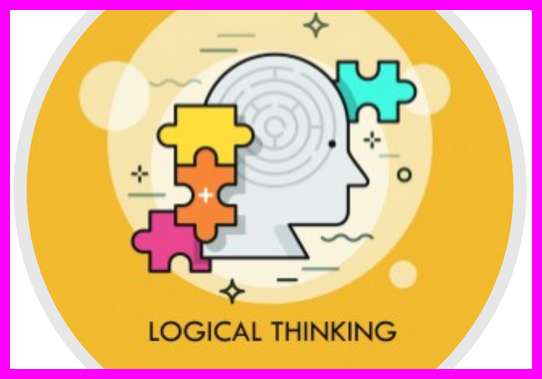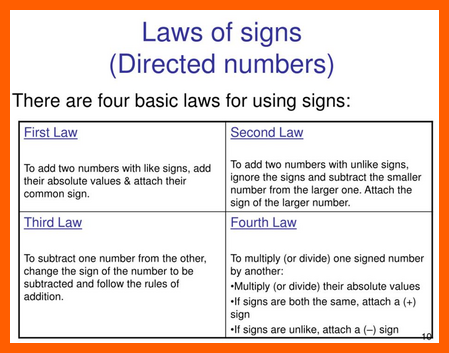EDUDOLPHIN.ORG--LEARNING WITH PROFESSOR CÉSAR AUGUSTO GONZÁLEZ AGUIRRE
EDUDOLPHIN.ORG | MY COURSES
EduDolphin's Faculty is recognized for its excellence in teaching and learning effectiveness. However, it is important to note that EduDolphin.org is not an accredited or registered educational institution. While EduDolphin’s Faculty provides credits, certificates, and diplomas to highlight learners' academic achievements, these credentials do not carry vernmental or institutional accreditation.
MY COURSES
MA101—STATISTICS FUNDAMENTALS
MA201—STATISTICS [SPSS]
SP400—SPANISH FOR BUSINESS OFFICIALS [ESPAÑOL PARA FUNCIONARIOS DE NEGOCIOS]
RS101—COACHING YOUR DISSERTATION [ QUANTITATIVE RESEARCH]
BLOOMING NOW!
Questions?
EDUDOLPHIN: EDUCATIONAL TIPS -- BLOG
EduDolphin: Educational Tips -- Blog
"Roots of Honesty and Virtue Lies in Good Education" Plutarch
[Retrieved from https://kukuvaya.org/blogs/some-thoughts/10-quotes-on-education-by-great-greek-philosophers-and-teachers]
EDUCATIONAL ISSUES THAT CONFRONT LEARNERS TODAY
EduDolphin Blog wants to do an evaluation on educational issues offered, anywhere, by scholars, and the way all stakeholders confront these challenges and/or needs on their daily lives.
Anthropomorphism As a Writer and/or as a Scholar "beware" about: Anthropomorphism
“What is anthropomorphism?
Anthropomorphism refers to giving human characteristics to a nonliving object or animal.
Why should I avoid anthropomorphism?
In academic writing, it is best to avoid using anthropomorphism because it causes sentences to be unclear and imprecise.
Because academic writing should be clear and direct, you want to avoid any phrasing that is not precise.
To make sure your sentences are precise, be sure that the subject of your sentence can perform the action of the verb.
What does anthropomorphism look like?
Anthropomorphism can show up differently in your writing. To see variations, see the examples below:
- Example One:
Incorrect: The article from Lassitter and Jones (2009) discussed in how coffee wakes you up in the morning.
Correct: Lassitter and Jones (2009) discussed how coffee wakes you up in the morning.
The incorrect sentence above includes anthropomorphism. An article cannot discuss something, as being able to discuss a topic is a human characteristic.
- Example Two:
Incorrect: This experiment attempted to investigate how students learn APA style (Wheatley, 2016).
Correct: Wheatley (2016) attempted to investigate how students learn APA style.
The incorrect sentence above includes anthropomorphism. An experiment cannot attempt something, but a researcher can.
- Example Three:
Incorrect: A review of the literature concluded that there is a gap in the research on this topic (Fraenza, 2016).
Correct: Fraenza (2016) concluded that there is a gap in the research on this topic.
The incorrect sentence includes anthropomorphism. A written work cannot conclude something, but a writer can, like the correct sentence demonstrates.
How do I avoid anthropomorphism?
When discussing research, focus on the authors or writers and state what they did, concluded, said, or found.
Do not use their results, article, or analysis as the subject of the sentence”(Retrieved from https://writingcenter.ashford.edu/anthropomorphism).
The concepts abovementioned are clear description of anthropomorphism, however the following excerpts [APA formatting] make one think, two times, if the attributes in each statement are correct as are demonstrated in the following table:
|
Correct usage |
Incorrect usage |
Rationale |
|
Rat pairs lived in the same enclosure. |
Rat couples lived in the same enclosure. |
“Rat couples” makes a misleading comparison between pairs of rats and human romantic couples. |
|
The theory addresses |
The theory concludes |
A theory might address, indicate, or present, but researchers (not theories) conclude. |
What do you think my fellow reader?
By the same token, this scholar agrees with the following:
“Determining what constitutes anthropomorphism can be challenging, and even distinguished scholars may disagree.
If a construction is in widespread use and its meaning is unambiguous, it is usually not anthropomorphic” (Retrieved from https://apastyle.apa.org/style-grammar-guidelines/grammar/anthropomorphism ).
However, this scholar disagrees with the same concepts of the manuscript, which emphasize:
For example, when describing what is contained in sections of an APA Style paper, the following constructions are all acceptable:
1. "In this section, I address"
Here this scholar cannot find anthropomorphism but “Avoid Using First Person Point of View in Academic Writing.”
2. "This section addresses"
This scholar is challenging this affirmation. What do you think?
3. "This paper focuses on"
This scholar is challenging this affirmation. What do you think?
4. "In this paper, I focus on"
Here this scholar cannot find anthropomorphism. Anyway, “Avoiding Using First Person Point of View in Academic Writing” is extremely important!
5. "The results suggest"
This scholar is challenging this affirmation. What do you think?
6. "The study found"
This scholar is challenging this affirmation. What do you think?
7. "The data provide evidence that"
This scholar is challenging this affirmation. What do you think?"
By the same token, this scholar hopes that the readers have found some answers.
Consequently, when referring to Scholarly Writing cannot accept the following asseveration:
“…However, common usage in academic writing includes some phrases such as "the results suggest" that, although examples of anthropomorphism, are acceptable for use because they do not lead to confusion. See APA 7, Section 4.11 for more information” ([Retrieved from https://academicguides.waldenu.edu/writingcenter/apa/other/anthropomorphism).
This scholar defines that the purity of a language is indispensable to cultivate the richness of the any language.
Thus, this scholar does not accept the term “acceptable.” In fact, acknowledging this absurdity goes in detriment of the English writing and the English language.
The following excerpt published by Walden University [2020] includes the following attributions that any writer must pay attention; however, this scholar disagrees with some of those remarks:
“Verbs for Theories, Studies, and Results
Theories, studies, results, and other aspects of research can take certain verbs in common usage without leading to confusion:
- address
- contribute
- find
- focus on
- indicate
- present
- provide
- show
- suggest
Some examples are
- The results showed a relationship between time spent in the intervention program and student standardized test scores.
- The table presents information on the demographics of this study.
- The theory indicates that societies work much like ecological systems, with different groups playing different and necessary roles in the larger system.
Theories, studies, results, and other aspects of research are sometimes paired with other kinds of actions that obscure the clarity of who is doing the action, though.
For example, consider the active verbs here and whether it would be best if a person or group of people took the action described by the verbs:
- Less clear phrasing: The theory concluded that transformational leadership style influences follower job satisfaction.
- Revised for clarity: The theorists concluded that transformational leadership style influences follower job satisfaction.
- Less clear phrasing: The theory determined that society operates based on a type of ecology analogous to a biological ecosystem.
- Revised for clarity: Through their research, population ecology theorists have determined that society operates based on a type of ecology analogous to a biological ecosystem.
- Less clear phrasing: The study explored the effect of retention strategies on RNs in an urgent care center.
- Revised for clarity: In the study, I explored the effect of retention strategies on RNs in an urgent care center.
- Less clear phrasing: The study examined the relationship between childhood bullying experiences and later life friendship attachments.
- Revised for clarity: In this study, I examined the relationship between childhood bullying experiences and later life friendship attachments.
Organizations
Organizations, as groups of people, can take actions that are appropriate for human actors:
- Johnson & Johnson recalled products from Target store shelves.
- The school board voted to require school uniforms.
- The Society of Professional Journalists issued new ethics guidelines.
- The hospital implemented new procedures regarding RN staffing requirements.
However, avoid ascribing actions to organizations when it is important to understand which specific people within the organization performed the action.
- Problematic phrasing: The factory walked out on strike.
- Possible revision: All nonmanagement employees of the factory walked out on strike”
(Retrieved from https://academicguides.waldenu.edu/writingcenter/apa/other/anthropomorphism).
All the highlighted statements are example of anthropomorphism, period!
Indeed, "Avoid Using First Person Point of View in Academic Writing;" is very important, please do not forget about that as well!
Any feedback is highly appreciated: edudolphinmfw@gmail.com
The Marvellous Syllogism
What Are Syllogisms?
“Syllogisms are logical arguments that make use of deductive reasoning to form arguments.”
There are many different types of syllogisms. They are structured in a simple way with two premises and a conclusion in their most basic form.
We have an innate penchant to argue about things.
Anyone reading this knows how amazing it can be to verbally wrestle with your friends about why your favorite football club is the best of all time, or perhaps you get into the classic argument of how Marvel’s cinematic universe kicks DC out of the park every time.
As entertaining as arguing can be, having proper arguments to support your beliefs not only helps you defend them, but also helps you form well-rounded opinions.
Having the ability to reason by logic is a method that philosophers have used for centuries to determine the true nature of things, to separate idiosyncratic beliefs from true reality.
Human head with maze inside and colorful jigsaw puzzle pieces. Concept of logical thinking, intelligence, mental capacity, mind game.

“Logical thinking is paramount to deduce knowable facts and weed out the false claims [see above picture].”
Logic and deductive reasoning are the pillars of every verifiable fact that we know about this world, helping us navigate through a sea of false claims and beliefs, especially in today’s world, which is so overloaded with information.
Syllogisms are one way to test existing claims and also arrive at new ones.
Logical Arguments and Deductive Reasoning
It’s important to determine the degree of truth in a statement and see if it holds any value or if the conclusion it comes to is valid.
To do this, we form a series of statements that convey our ‘premises’, which are the known facts or assumptions we make in order to reach a conclusion.
This series of statements is called an argument and a logical argument is one in which the conclusion holds true, given the premises.
For example:
- All men are mortal (1st premise)
- Socrates was a man (2nd premise)
- Thus, Socrates was mortal (Conclusion)
Here we have used ‘deductive reasoning’, or top-down logic, to reach a valid conclusion by comparing two true premises.
This can be done in many ways through various types of logical arguments; syllogisms are one of these arguments, one that uses deductive reasoning to reach a conclusion based on two or more premises that are assumed to be true.
Syllogism and its Structure
A syllogism is a deductive tool that can be traced all the way back to Aristotle.
It has been used by many notable philosophers and was also completely accepted by George Boole, who is famous for introducing Boolean algebra and is also credited for laying the foundation of the information age.
The basic structure of syllogisms is a three-step process to reach a conclusion using two true premises.
These three steps are:
- Major premise
Each part of the argument is a categorical proposition, meaning that it agrees or denies that the instance of one category (the subject or the middle) is part of another category (the predicate).
A major premise then becomes the first assertion or claim that you put forward on which to base your argument, which is assumed to be true.
For example:
Some cats are orange: Cats – middle (M) and Orange – predicate (P)
- Minor premise
This is the second assertion that is assumed to be true. It also follows the pattern of a categorical proposition.
For example:
Some mammals are cats; Mammals – subject (S), and Cats – middle (M)
- Conclusion
By assuming the two premises are true and comparing the two, we can come to a logical conclusion.
This conclusion holds true because both of our premises hold true; it would become invalid as soon as any one of the premises is proven to be false.
For example:
- Major premise – Some cats are orange
- Minor premise – Some mammals are cats
- Conclusion – Some mammals (S) are orange (P)
Conclusion
Syllogisms are an important concept to make any argument better or break down an existing claim to see if it holds true.
The verification for this is done through checking the validity of the premises, meaning that you check whether they are true or fabricated, whether the sources of the premises are legit and whether the conclusion is drawn from the true premises.
You don’t need to remember all the various combinations of syllogisms; understanding the basic structure will do the trick when it comes to forming your own unique logical argument.
Basically, don’t take any information that comes your way at face value. Break down the premises, conclusions and keep yourself logically informed! [Retrieved from https://www.scienceabc.com/pure-sciences/what-are-syllogisms.html]
Photo Credit: Andrew Krasovitckii/ Shutterstock.
Why Our Students --When Problem Solving--Fail in Mathematics? Two Principles! SIMPLE: They do not know it! Why?
1. The Law of the Signs:
- + x + = + ( positive x positive = positive) [First Law]
- + x - = - ( positive x negative = negative) [Second Law]
- - x + = - ( negative x positive = negative) [Third Law]
- - x - = + ( negative x negative = positive) [Fourth Law]

2. Please Excuse My Dear Aunt Sally [PEMDAS].
Just make a follow-up step-by step and arithmetically solve each itemized task of this sequence:
- Parenthesis
- Exponent
- Multiplicationn
- Division
- Addition
- Subtraction

Thanks Aunt Sally !
Arithmetically Speaking: Are There Billionaires in the United States of America? Of course not!
Definitions:
- Arithmetic: [ǝ-rith’mǝ-tik] n. The art of computation, the most elementary branch of mathematics (The New American Webster Handy College Dictionary, 1995, p, 46).
- Million: [mil’yǝn] n. 1,000 times 1,000: 1,000,000.
- Millionaire: [mi’yǝ-nāir’] n. A person worth 1,000,000 dollars, pounds, etc. Avery rich person (The New American Webster Handy College Dictionary, 1995, p, 433).
- Billion: [bil-yǝn] n. A million millions (The New American Webster Handy College Dictionary, 1995, p, 75).
Arithmetically speaking:1,000,000,000,000
- Trillion: [tril’yǝn] n & adj. The cardinal number represented by 1 followed by eighteen zeros ? (The New American Webster Handy College Dictionary, 1995, p. 697). This last definition is arithmetically incorrect. It should be defined as: A cardinal number followed by twenty-four zeros.
Arithmetically speaking: 1,000,000,000,000.000,000,000,000

TIPS + SCIENTIFIC ANALYSES = INCREASES THE BODY OF KNOWLEDGE
TIPS + SCIENTIFIC ANALYSES = INCREASES THE BODY OF KOWLEDGE Any issue related to Education is an algid point of "research" priority to EduDolphin This space is designed to reflect and comment on present educational challenges.

BLOOMING SOON!

